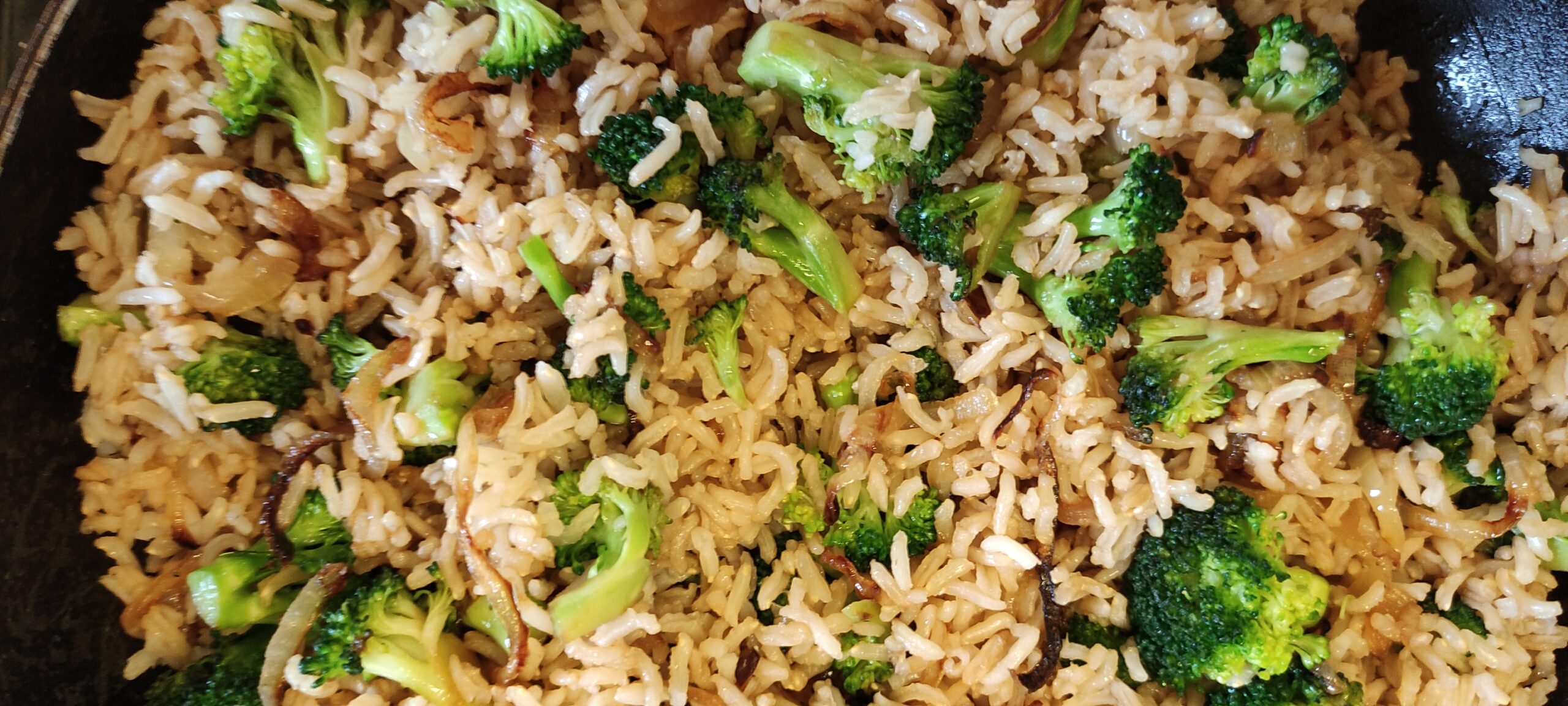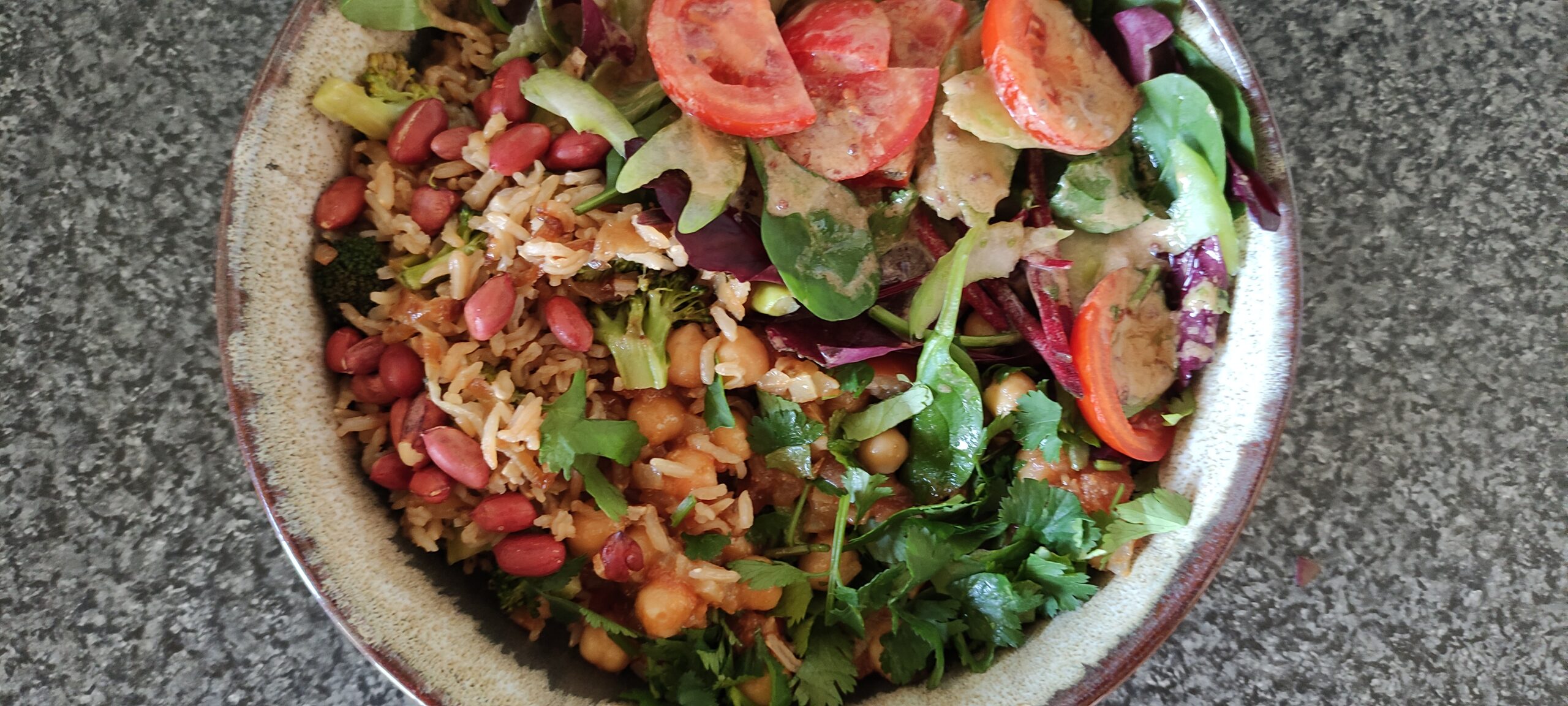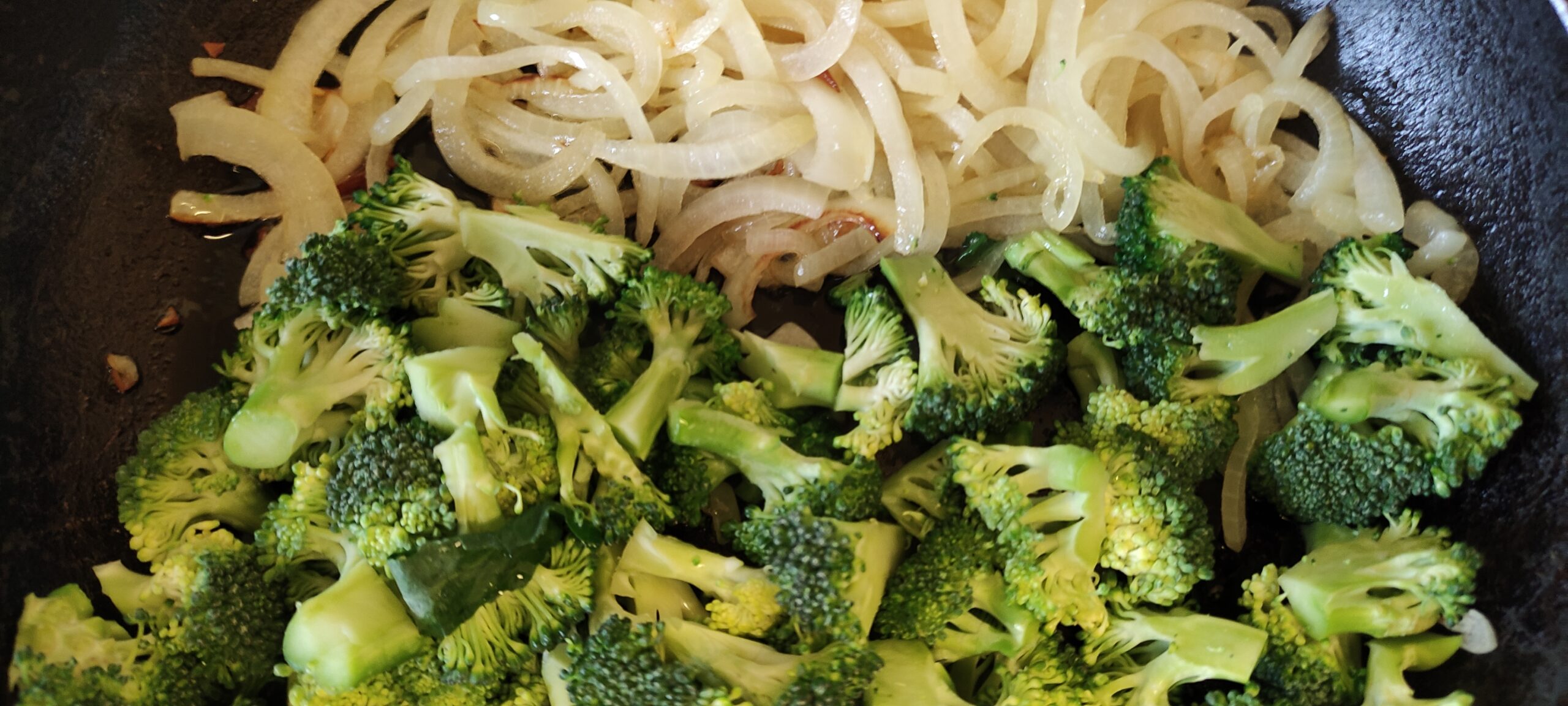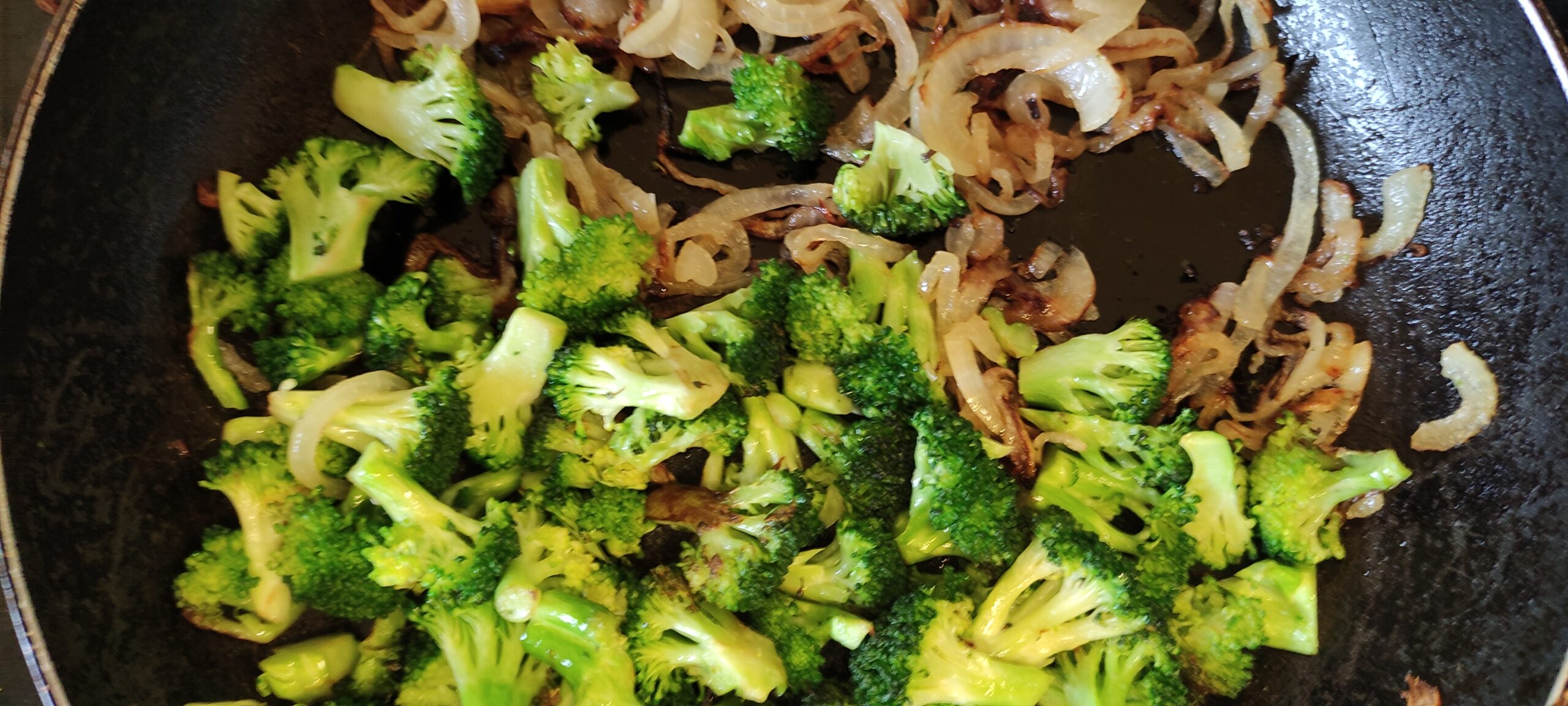Macro rice

What makes rice "macro", I hear you ask? To answer your question, we need to go back to Japan of the 1920s, where a Japanese philosopher named George Ohsawa (born Nyoichi Sakurazawa) first developed his diet of local wholegrains, fresh vegetables, sea vegetables (seaweeds), beans, nuts, and seeds, and the occasional portion of fish, a diet which came to be referred to as "macrobiotics".
By the late '60s/early '70s (very possibly influenced by John Lennon and Yoko Ono), Western vegetarians had adopted one of its recipes in particular: macro rice. Short-grain, barely polished rice (there's a strict Japanese hierarchy about how much bran is left on the rice after polishing), caramelized onions, chopped parsley, and rehydrated arame (a Japanese seaweed) were dressed with soy sauce. Delicious! And so wrong. True macrobiotics is about eating local wholegrains, local fresh vegetables, and local seaweeds, but hey ho.
Cranks, the famous vegetarian restaurant in Carnaby Street, began to make a version of this without the arame, which helped to spread its popularity here in London.
By the 1990s, when it had all but disappeared from memory, macro rice was still being served at Bennett & Luck at least once a week. It was one of their signature dishes (along with their dressing and their couscous). Their version included arame and cashew nuts; it was the most authentic version imaginable. I used to make mine the same way they did, until it became difficult to find short-grained wholegrain rice and arame in my local shops, and the price of cashews soared.

Dried arame: sea vegetable
Now I make it with brown basmati (which is long-grained not short-grained), broccoli (instead of the seaweed), parsley, and toasted sunflower seeds or occasionally pumpkin seeds. It's not quite as nice, but it still goes down a treat!
Today I didn't have any parsley, and I discovered my sunflower seeds had turned rancid. Unless you eat a lot of seeds or nuts, it's always best to buy them in small quantities. I toast mine lightly in the oven without preheating it (saves gas). I watch them like a hawk towards the end of the cooking time: because of their high fat content, they can burn so easily. If you are planning to eat the rice over a number of days, store the seeds separately and add them at the last moment.

Macro rice served in a Bennett & Luck-style salad
I have never eaten this dish hot. I always serve it at room temperature (the best way), or straight from the fridge if I'm storing it. While this recipe is miles from the original, it still remains close in its original intent.
Serves 4 as an accompaniment.
Ingredients
135g basmati brown rice (a very generous 3/4 cup)
1 generous tablespoon oil
1 onion, cut in two and thinly sliced across the grain
1 small head of broccoli, florets only, cut up small
30g flat-leaf parsley, chopped
1 tablespoon Kikkoman soy sauce
25g toasted sunflower or pumpkin seeds for serving
If you're unfamiliar with Kikkoman soy sauce, find out more about it here:
Method
1.
Boil the rice as instructed on the pack (or for 20 minutes or so until tender in lightly salted water).
Whilst it cooks, fry the onions for 8 minutes over a medium heat, stirring occasionally. Reduce the heat if they begin to burn.
After 8 minutes, push them to the side of the pan and add the chopped broccoli florets. Save the stem for soups or slaws.

2.
Turn down the heat and cook the onions and broccoli, stirring each occasionally, but keeping them as separate as you can for the next 8 minutes.
It's fine for the broccoli to char a little, but do not let it burn. The same goes for the onions.
Add the chopped parsley when there's 2 minutes left on the clock. Now you can stir them all together.

3.
When the rice is cooked, drain it and rinse it with boiling water, then set it to drain for a minute or two.
Add it to the saucepan and fold the vegetables through. Sprinkle with the soy sauce and fold everything again.
Add the seeds or nuts in once it is cold (or a proportion of them: see above).
Store any leftovers in the fridge.

Any questions? You can use the comments form at the bottom of the page.
Did you know?
You'll find recipes at the back of all the books in the Send for Octavius Guy series: